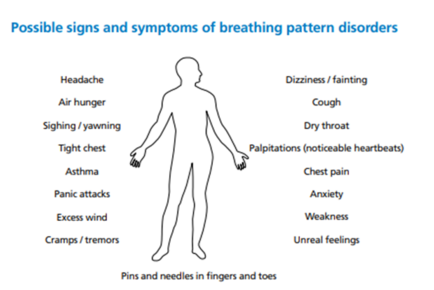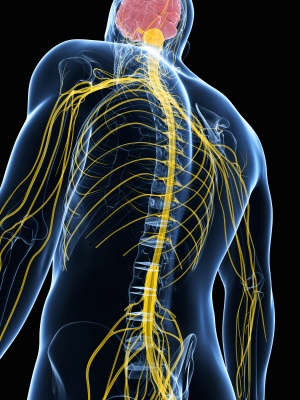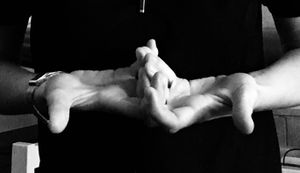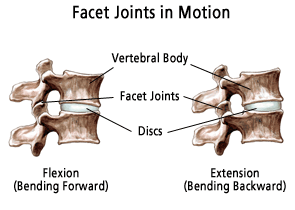Neck and Back Pain and Breathing Pattern Disorders - Physiopedia

A dysfunctional breathing pattern is defined as when the "normal biomechanical pattern of breathing is disrupted, resulting in dyspnoea and associated non-respiratory symptoms that cannot be fully explained by disease pathophysiology" (Ionescu et al, 2021). Normal breathing involves synchronised upper and lower rib cage movement as well as activation of the diaphragm and abdominal muscles (Kaminoff, 2006). Abnormal breathing, also known as thoracic breathing” instead involves breathing from the upper chest with greater upper rib cage motion compared to lower rib cage (Chaitow et al, 2002). Thoracic breathing is produced by recruiting the accessory muscles of respiration (including upper trapezius, sternocleidomastoid and scalene muscles) rather than abdominal motion. A cross-sectional study by Deshmukh et al (2022) found that 74% of participants complaining of back pain and 68% of those complaining of neck pain presented with a dysfunctional breathing pattern. Individuals with poor posture (Lewitt, 1980), scapular dyskinesis (Clifton-Smith & Rowley, 2011), low back pain (LBP) and neck pain have also been shown to exhibit faulty breathing mechanics.

Neck and Back Pain and Breathing Pattern Disorders - Physiopedia

Thoracic Instability - Physiopedia

Manual Assessment of Respiratory Motion (MARM) - Physiopedia

Breathing Pattern Disorder — Long COVID Physio

Functional Movement Disorders Assessment Made Simple

Breathing Pattern Disorders - Physiopedia

The Science of Breathing Well - Physiopedia

Editing The Management of Breathing Pattern Disorders - Physiopedia

Surfer's Neck - Physiopedia

Kemp Test - Physiopedia

Chronic Neck Pain and Breathing Problems - How To Help







